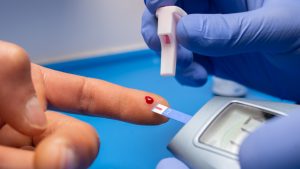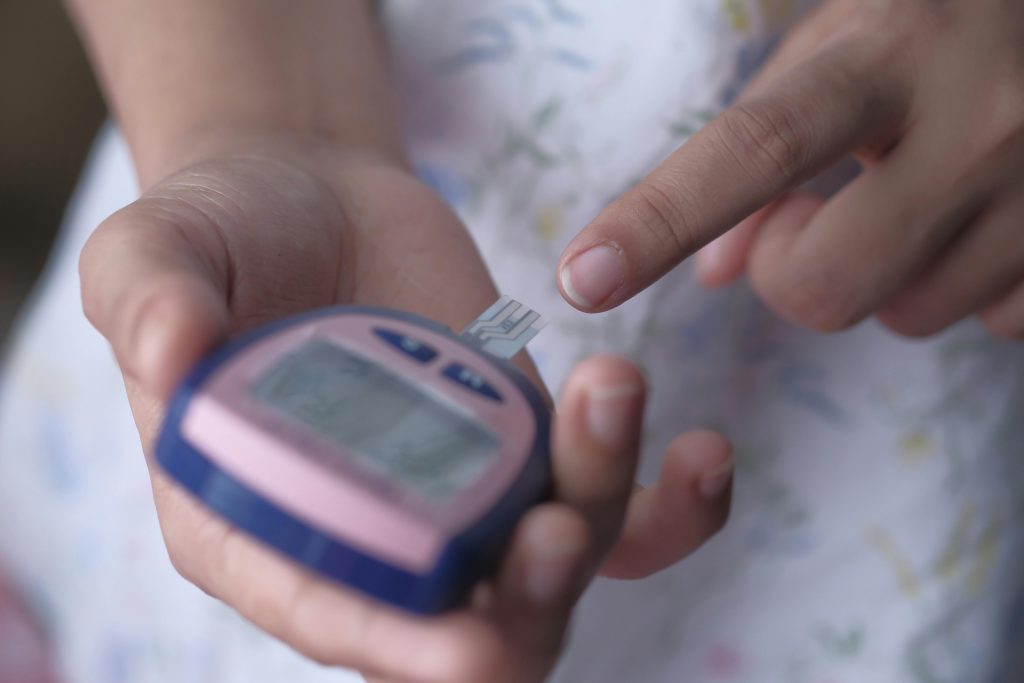When it comes to monitoring our blood glucose levels, one of the most common tools is the glucometer. However, many people wonder: What’s the difference between a glucometer and a glucosometer? Are these terms interchangeable, or is there a subtle distinction between the two? In this article, we’ll clarify both terms and explore why they refer to the same device, despite sounding a bit different.
The Confusion Between Terms
While both “glucometer” and “glucosometer” refer to the same device used to measure blood glucose, these two words are used in different regions. The difference in spelling is not a result of functionality or technology—it’s simply a matter of language variation between regions that speak Spanish.
- Glucometer: This term is commonly used in Spain. It comes from the word “glucosa” (glucose) and “metro” (meter), essentially meaning a device that measures glucose levels.
- Glucosometer: This version is more frequently used in Latin American countries, though it’s just another way of describing the same device. Like “glucometer,” it’s a combination of “glucosa” (glucose) and “someter” (to measure), again meaning a glucose-measuring device.
So, while there’s a slight difference in how the words are formed, they both describe exactly the same device. In essence, both terms are synonymous.
Why the Difference?
The difference in naming conventions is simply due to the different ways Spanish is spoken in various parts of the world. Just as in English, where some terms are used differently depending on the region (e.g., “elevator” in the U.S. vs. “lift” in the UK), the terms “glucometer” and “glucosometer” follow regional linguistic preferences.
In Spain, the use of “glucometer” has become the standard, while in Latin America, “glucosometer” is more widely recognized. Both words serve the same purpose and are equally valid.
Are They the Same Device?
Yes! Regardless of whether you say “glucometer” or “glucosometer,” the device in question is exactly the same. They both function in the same way to measure your blood glucose levels, using a test strip and a small blood sample. Whether you live in Spain or Latin America, the glucometer is an essential tool for those who want to monitor their blood sugar regularly.
So, the next time you hear someone refer to their glucometer or glucosometer, you’ll know that both terms refer to the same device, and there’s no need to worry about the difference.
A Quick Overview of How a Glucometer/Glucosometer Works
For those new to using a glucometer, here’s a quick refresher on how the device works, regardless of the name:
- Insert the Test Strip: Place a test strip into the glucometer (or glucosometer). These strips are specially designed to react with glucose in your blood.
- Prick Your Finger: Use a lancet to make a small, gentle puncture on the side of your fingertip. This provides a tiny blood sample.
- Apply the Blood Sample: Touch the blood sample to the test strip, and within a few seconds, the glucometer will display your blood glucose level on the screen.
It’s that simple! By using a glucometer or glucosometer, you can quickly track your blood sugar levels to make informed decisions about your diet, exercise, and overall health.
Conclusion:
In the end, whether you call it a glucometer or a glucosometer, the important thing is that these terms both refer to the same helpful device for measuring blood glucose levels. The difference is purely linguistic, and it doesn’t affect the way the device works or its effectiveness. So, no matter where you are in the world, you’re using the same tool to take charge of your health.
Understanding these subtle differences can make communication easier, but what truly matters is that you feel empowered to use the glucometer or glucosometer to monitor your health and live a balanced, energetic life. The goal is always to use this tool to your advantage, helping you make better lifestyle choices and stay on top of your well-being!
“Glucometer or Glucosometer? Understanding the Difference Between Both Terms”
Introduction: When it comes to monitoring our blood glucose levels, one of the most common tools is the glucometer. However, many people wonder: What’s the difference between a glucometer and a glucosometer? Are these terms interchangeable, or is there a subtle distinction between the two? In this article, we’ll clarify both terms and explore why they refer to the same device, despite sounding a bit different.
The Confusion Between Terms
While both “glucometer” and “glucosometer” refer to the same device used to measure blood glucose, these two words are used in different regions. The difference in spelling is not a result of functionality or technology—it’s simply a matter of language variation between regions that speak Spanish.
- Glucometer: This term is commonly used in Spain. It comes from the word “glucosa” (glucose) and “metro” (meter), essentially meaning a device that measures glucose levels.
- Glucosometer: This version is more frequently used in Latin American countries, though it’s just another way of describing the same device. Like “glucometer,” it’s a combination of “glucosa” (glucose) and “someter” (to measure), again meaning a glucose-measuring device.
So, while there’s a slight difference in how the words are formed, they both describe exactly the same device. In essence, both terms are synonymous.
Why the Difference?
The difference in naming conventions is simply due to the different ways Spanish is spoken in various parts of the world. Just as in English, where some terms are used differently depending on the region (e.g., “elevator” in the U.S. vs. “lift” in the UK), the terms “glucometer” and “glucosometer” follow regional linguistic preferences.
In Spain, the use of “glucometer” has become the standard, while in Latin America, “glucosometer” is more widely recognized. Both words serve the same purpose and are equally valid.
Are They the Same Device?
Yes! Regardless of whether you say “glucometer” or “glucosometer,” the device in question is exactly the same. They both function in the same way to measure your blood glucose levels, using a test strip and a small blood sample. Whether you live in Spain or Latin America, the glucometer is an essential tool for those who want to monitor their blood sugar regularly.
So, the next time you hear someone refer to their glucometer or glucosometer, you’ll know that both terms refer to the same device, and there’s no need to worry about the difference.
A Quick Overview of How a Glucometer/Glucosometer Works
For those new to using a glucometer, here’s a quick refresher on how the device works, regardless of the name:
- Insert the Test Strip: Place a test strip into the glucometer (or glucosometer). These strips are specially designed to react with glucose in your blood.
- Prick Your Finger: Use a lancet to make a small, gentle puncture on the side of your fingertip. This provides a tiny blood sample.
- Apply the Blood Sample: Touch the blood sample to the test strip, and within a few seconds, the glucometer will display your blood glucose level on the screen.
It’s that simple! By using a glucometer or glucosometer, you can quickly track your blood sugar levels to make informed decisions about your diet, exercise, and overall health.
Conclusion:
In the end, whether you call it a glucometer or a glucosometer, the important thing is that these terms both refer to the same helpful device for measuring blood glucose levels. The difference is purely linguistic, and it doesn’t affect the way the device works or its effectiveness. So, no matter where you are in the world, you’re using the same tool to take charge of your health.
Understanding these subtle differences can make communication easier, but what truly matters is that you feel empowered to use the glucometer or glucosometer to monitor your health and live a balanced, energetic life. The goal is always to use this tool to your advantage, helping you make better lifestyle choices and stay on top of your well-being!

Type 2 Diabetes: Is It Really Reversible?
A recent National Geographic article [link] explores how type 2 diabetes could be reversible with the right approaches. This condition, which affects millions of people worldwide, has long been considered a chronic and progressive disease. However, recent research challenges this perception and suggests that with lifestyle changes and the right approach, remission is possible. The

How Do GLP-1 Drugs Compare? A Breakdown of Ozempic, Mounjaro, and Trulicity
GLP-1 receptor agonists have revolutionized diabetes management, with drugs like Ozempic, Mounjaro, and Trulicity leading the market. But how do these medications compare in terms of effectiveness, side effects, and patient outcomes? Let’s explore their differences and what they mean for diabetes patients. Understanding GLP-1 Medications GLP-1 receptor agonists mimic a natural hormone that helps

Why Has Medicare Spending on Diabetes Medications Skyrocketed in 5 Years?
In the past five years, Medicare spending on diabetes medications has increased nearly fivefold, reaching $35.8 billion in 2023. This surge has been primarily driven by the growing use of GLP-1 drugs such as Ozempic, Mounjaro, and Trulicity. But what is behind this cost escalation, and how does it affect patients and the U.S. healthcare

The Gut Microbiota and Blood Sugar Control: A Hidden Connection
The human gut is home to trillions of bacteria that play a crucial role in digestion, immune function, and even metabolism. Recent research has revealed a fascinating link between the gut microbiota and blood sugar regulation, shedding light on how the balance of microbes in our intestines can influence diabetes risk and overall metabolic health.

The Dawn Phenomenon: Why Blood Sugar Rises While You Sleep
For many people with diabetes, waking up with high blood sugar levels can be frustrating—especially if they didn’t eat anything overnight. This early-morning spike in blood glucose is known as the Dawn Phenomenon, and it happens due to natural hormonal changes in the body. But why does it occur, and how can it be managed?

The Influence of Red Light on Blood: Can It Improve Diabetes?
Type 2 diabetes is a metabolic disease characterized by insulin resistance and elevated blood glucose levels. In the search for complementary alternatives to improve glycemic control, red light therapy has gained attention due to its potential to enhance circulation, reduce inflammation, and optimize cellular function. But what does science say about it? ✨ What is

